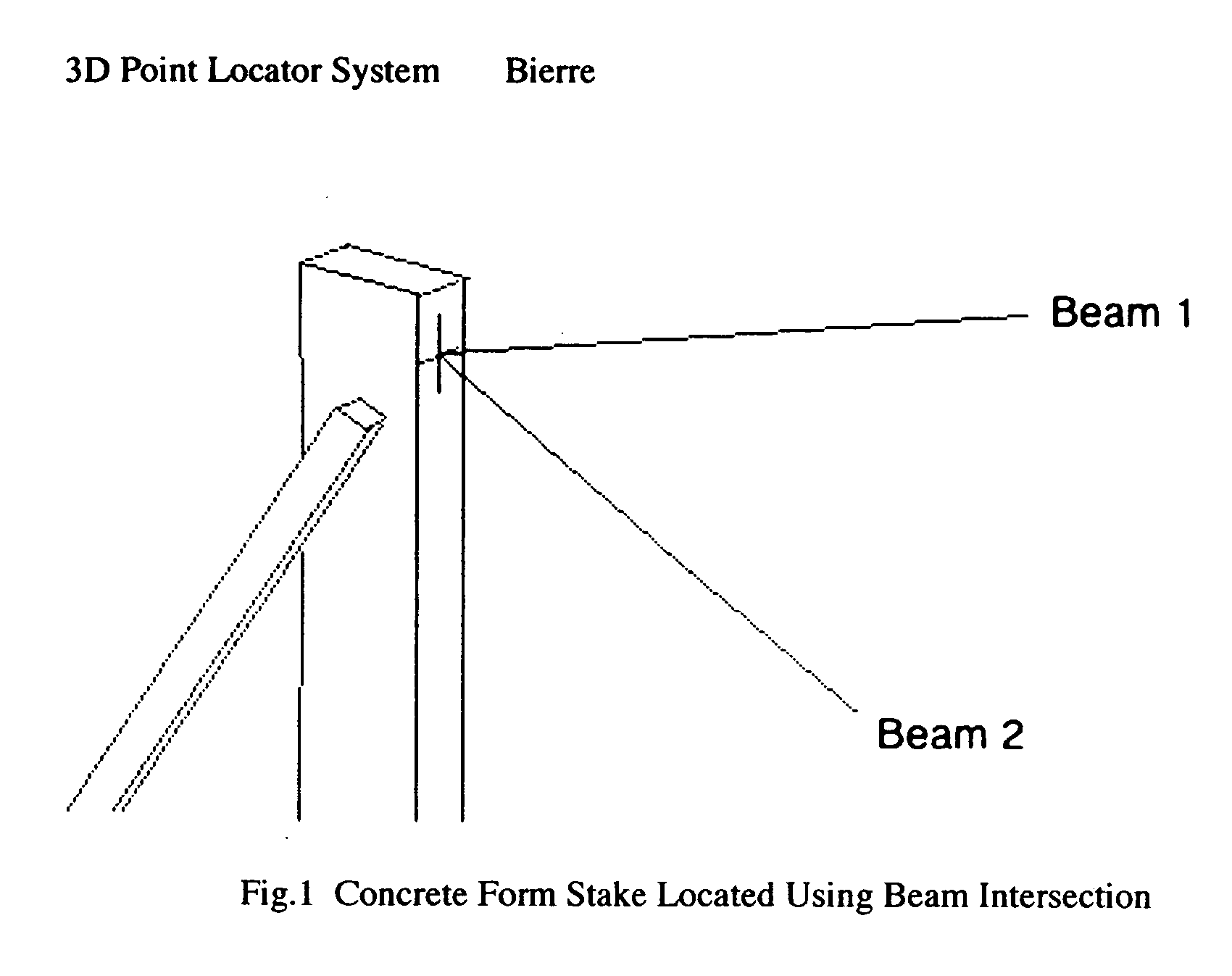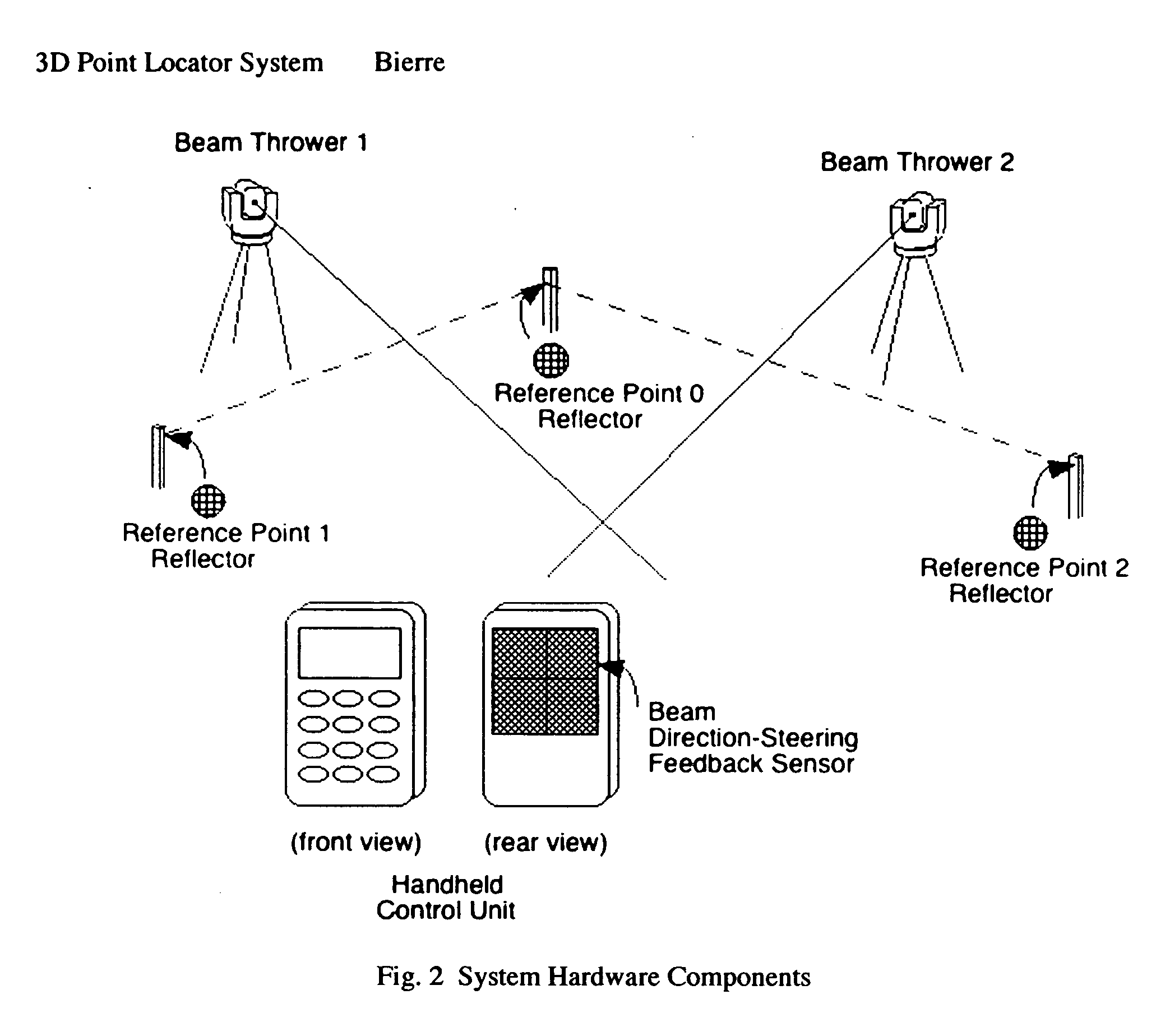3D point locator system
a point locator and point technology, applied in the direction of electric programme control, program control, instruments, etc., can solve the problem of illusory apparent cooperation between the spots, and achieve the effect of reducing the distance between the spots
- Summary
- Abstract
- Description
- Claims
- Application Information
AI Technical Summary
Benefits of technology
Problems solved by technology
Method used
Image
Examples
Embodiment Construction
3D Direction Vectors and Rotators
[0079] The geometric algorithms underlying the invention are based on direction vector processing. Directions in 3D space are represented as vectors of unit length, with tails at the origin, and heads on the unit sphere. FIG. 4 illustrates two distinct directions, d1 and d2, specified computationally as direction vectors.
[0080] Rotation of a 3D coordinate space about the origin can be managed in a similarly direct manner. Given that the rotation transforms points from old coordinates into new coordinates, one need only furnish the new x, y, z axes in old coordinates to specify the rotation. Each new axis is expressed as a direction vector. As a group, the new axes must maintain the same spatial relationship among each other as the basis vectors in the old space (by convention, only right-handed axes are used).
[0081] Rotating a point P into its new coordinates P′ is carried out using the matrix operation:
P′=P·(newXaxis newYaxis newZaxis)=P·R
whe...
PUM
 Login to View More
Login to View More Abstract
Description
Claims
Application Information
 Login to View More
Login to View More - R&D
- Intellectual Property
- Life Sciences
- Materials
- Tech Scout
- Unparalleled Data Quality
- Higher Quality Content
- 60% Fewer Hallucinations
Browse by: Latest US Patents, China's latest patents, Technical Efficacy Thesaurus, Application Domain, Technology Topic, Popular Technical Reports.
© 2025 PatSnap. All rights reserved.Legal|Privacy policy|Modern Slavery Act Transparency Statement|Sitemap|About US| Contact US: help@patsnap.com



